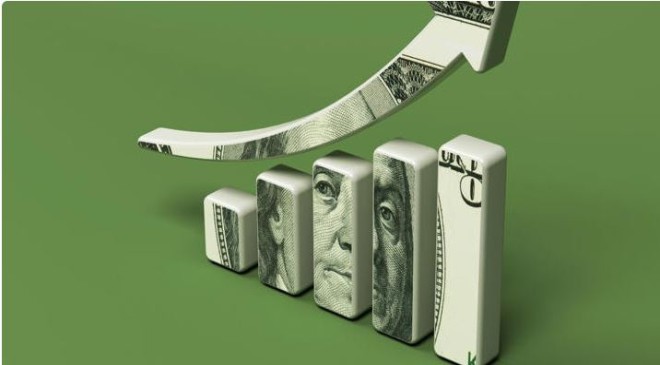Using a slight variation of a technique co-developed by Motley Fool co-founder David Gardner known as the Gardner-Kretzmann Continuum, I focus on 35 “core” holdings that I steadily dollar-cost average into over time. I chose 35 stocks because I am 35 years old — allowing me to maintain a Gardner-Kretzmann Continuum score of 1. This gives me a healthy selection of my favorite investments to choose between for my weekly additions without being too overwhelming to keep track of quarter after quarter.
Read More :7 Best Passive Income Ideas To Increase Your Monthly Cash Flow
While the S&P 500 index is now down almost 10% from its 52-week highs, two of my core holdings have seen their share prices dip 24% and 25% from their 52-week highs. Here’s why I’m adding to ASML (NASDAQ: ASML) and Kinsale Capital Group (NYSE: KNSL) and holding for as long as possible.
ASML: Down 24% from 52-week highs
Through its deep ultraviolet (DUV) and extreme ultraviolet (EUV) lithography, ASML has mastered the process of using light projections to etch infinitesimal patterns onto silicon wafers used in semiconductor chips.
So what gives me the confidence to take a leap of faith and invest in ASML’s wildly complex operations?
In simplest terms, ASML’s dominant market leadership and subsequent moat. Commanding 80% of the more mature DUV lithography market while maintaining a virtual monopoly on its bleeding-edge EUV lithography industry, ASML has accumulated nearly 40 years’ worth of experience, focusing primarily upon its lithography niche.
Read More : The best smart home gadgets for your first apartment
Thanks to this domination of its niche and its unmatched technological prowess, there currently is no single PepsiCo to ASML’s Coca-Cola. This shines through financially in the company’s profitability metrics, such as its 28% net profit margin and high and rising return on invested capital (ROIC) of 55%.
Were ASML in the S&P 500, its ROIC would be the sixth-highest in the index, and its net profit margin would rank in the top 10%. These profitability metrics are strong indicators of a wide moat and tend to point to a stock’s potential to outperform the market — which looks especially true considering ASML’s dominant market share.
While sales growth decelerated to “just” 15% in its most recent quarter, these results aren’t terrifying considering that management is calling this a trough period for the cyclical semiconductor market. Adding further conviction to why I like adding to ASML at these prices, the company still has a backlog worth over 35 billion euros — equalling more than one full year’s revenue.
At a price-to-earnings (P/E) ratio of 29, ASML is well below its 10-year average of 35. This discount, paired with the company’s incredible profitability and leadership position in a semiconductor industry expected to nearly double by 2030, makes this core holding an easy dollar-cost averaging purchase for me
Kinsale Capital: Down 25% from 52-week highs
As the only publicly traded stock focusing exclusively on the excess and surplus (E&S) insurance market, Kinsale takes on a long list of odd underwriting lines, such as insuring collectibles, amusement parks, product recalls, and aviation shows.
Read More : 2 Bargain Stocks You Can Buy Today and Hold Forever
However, after dropping 20% following its third-quarter earnings, it may seem like the sky is falling for Kinsale Capital. Despite this, a closer look at the company’s results — and, more importantly, a focus on the longer term — may show that the business is stronger than ever.
For many quarters now, Kinsale’s founder and CEO Michael Kehoe has warned investors that Kinsale’s longer-term growth rate is probably between 10% and 20%. Nevertheless, Kinsale has seen astronomical revenue and earnings-per-share (EPS) growth of 40% and 96% annually over the last three years, thanks to inflation pushing pricing higher and fewer catastrophic losses.
This left the company’s valuation priced for perfection as its stock price doubled over those three years.
However, in its most recent quarter, net written premium growth (total new insurance policies earned, minus what was ceded to reinsurers) slowed from 51% to 25% quarter over quarter — and Kinsale’s stock started sliding. While I understand this sell-off somewhat due to the dramatic nature of the slowdown in growth, it seems incredibly overdone, especially as Kehoe deliberately tried to brace the market for this eventual deceleration.
Making this stock price drop all the more questionable, Kinsale’s underwriting income rose 111%. Meanwhile, its $2.8 billion investment portfolio recorded an increase in interest income of 96%.
Best yet for investors, Kinsale’s combined ratio improved quarter over quarter from 77% to 75%. Combined ratios measure insurers’ profitability in percentage terms, with 100% equalling breakeven and lower scores being better. In simple terms, for every dollar Kinsale wrote in premium, it held onto $0.25 in Q3 — a level of profitability that is unmatched in the E&S industry.
Thanks to this best-in-class profitability, Kinsale’s recently lowered forward P/E of 27 is a much more tolerable price to pay for the brilliant compounder — even as it gradually drifts to its eventual 10% to 20% growth rates.
With a market capitalization of just $7.6 billion — 37% of which is its $2.8 billion investment portfolio that now earns 4% interest thanks to higher rates — Kinsale may not need 40% growth anymore to deliver market-stomping returns. Despite it being the largest position in my portfolio at 6% of my total holdings, I’m delighted to add to this winner yet again.
SPONSORED:
10 stocks we like better than ASML
When our analyst team has a stock tip, it can pay to listen. After all, the newsletter they have run for over a decade, Motley Fool Stock Advisor, has tripled the market.*
They just revealed what they believe are the ten best stocks for investors to buy right now… and ASML wasn’t one of them! That’s right — they think these 10 stocks are even better buys.

































